Recently, it seems that no matter where you go, your dog is right there by your side.
Now, normally this wouldn’t be considered a bad thing. On the contrary, who wouldn’t want a loyal companion that’s there for them through thick and thin?
If only they would just let you out of their sight long enough for you to go to the toilet without them staring at you the whole time.
If you’re here wondering, “Why is it that my dog won’t leave my side?”, there are actually numerous possible reasons that can explain this.
From their genetics to possible health and behavioral issues, let’s look into some of the reasons as to why your dog might be constantly glued to your side.
Possible Reason Number 1: Separation Anxiety
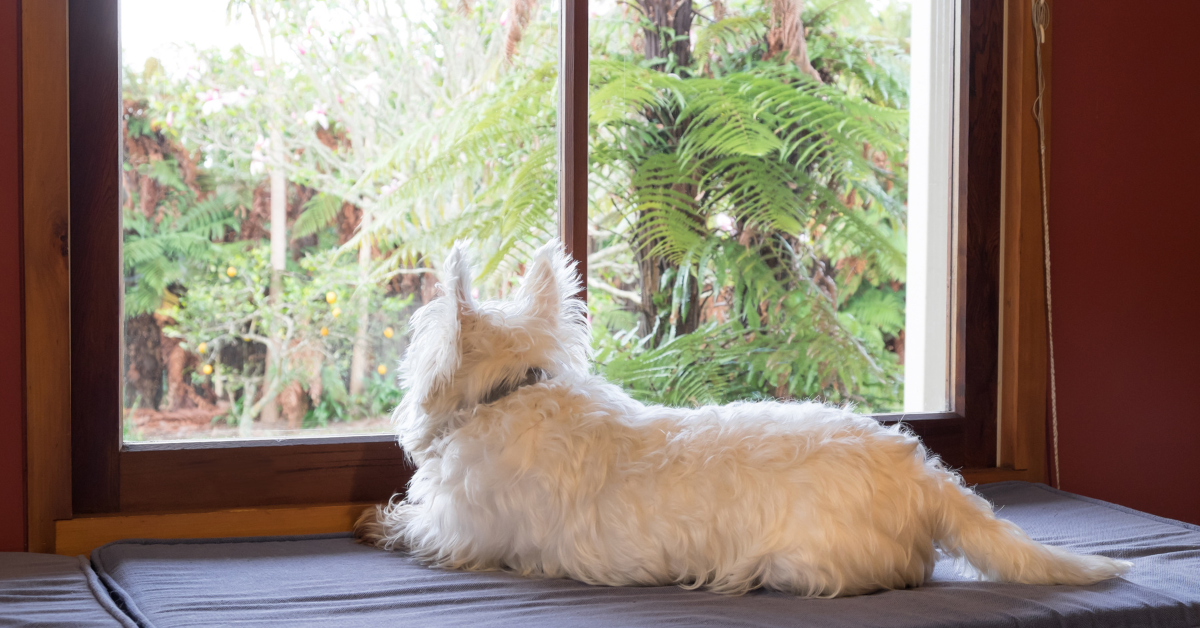
Separation anxiety isn’t a term that should be used lightly.
There’s a difference between your dog enjoying being around you and needing to be around you. With separation anxiety, time apart from you means incredible unrest and mood disruption for your dog.
Separation anxiety and fearfulness can be characterized as your dog becoming overly anxious when you leave- even if it’s only for a minute or two.
Some of the symptoms of separation anxiety- such as whimpering, barking, and nervous pacing- can manifest in your dog’ behavior if you have to leave for work or if you’re going upstairs for the evening.
It could even get as bad as them committing destructive behaviors, such as going to the bathroom inside or otherwise defiling the house!
Possible Reason Number 2: Their Breed
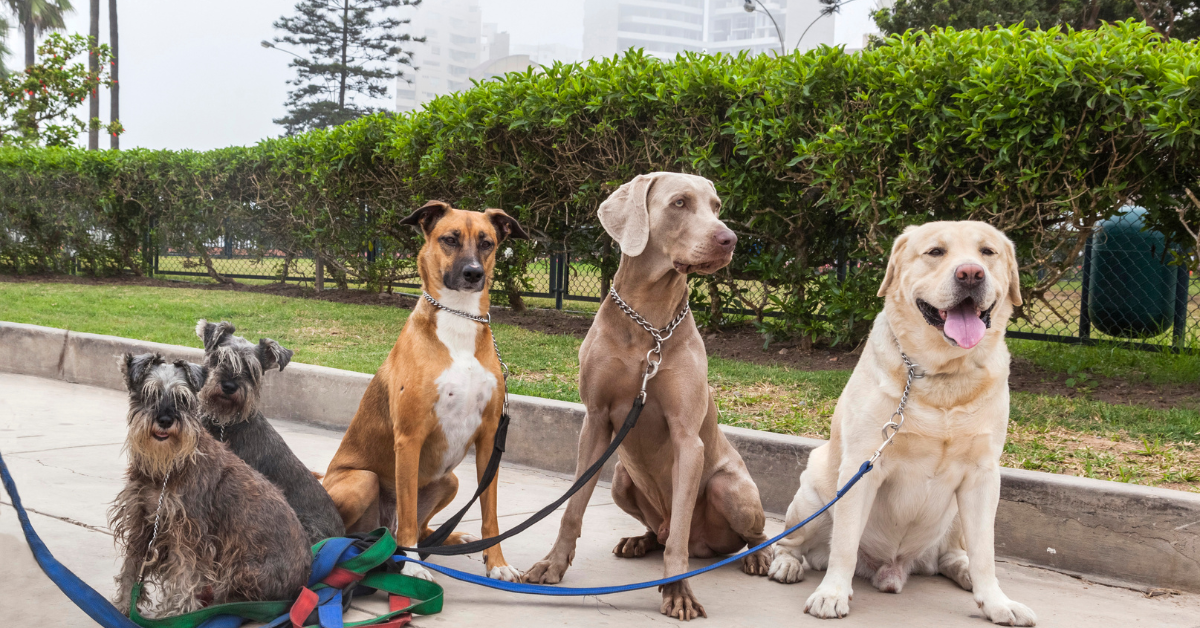
Dogs are championed for their loyalty, but some breeds tend to be clingier than others.
Smaller dogs, such as chihuahuas, are specifically bred for companionship. They love being around people and the attention involved.
Many popular breeds, including Golden Retrievers and German Shepherds, also tend to be very attached to their owners.
This can be nice, knowing your dog is eager to be in your presence. However, there will be times when you need a room to yourself, or you can’t play with them. That’s when their dependency on you might become more apparent.
Possible Reason Number 3: Health Issues
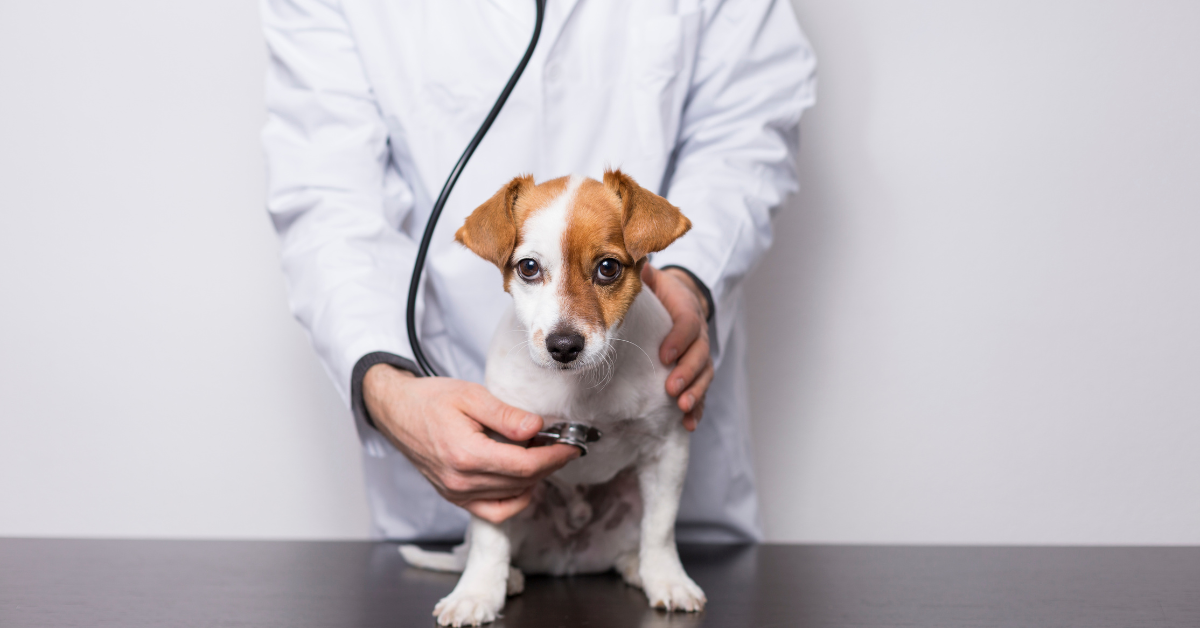
Dealing with health problems is scary for dogs because they don’t know exactly what’s going on.
They just know that as the dog owner you’re their protector, and will look to you for support. If you have an older dog whose sight or hearing is going out or is otherwise ailing, they might start spending more time around you.
Since you’re a familiar presence, you can be a huge source of comfort for your dog. This can also clue you into their health. Talk to your vet so you can get a better sense of their condition and what can be done to help them.
Possible Reason Number 4: Being Overly Attentive
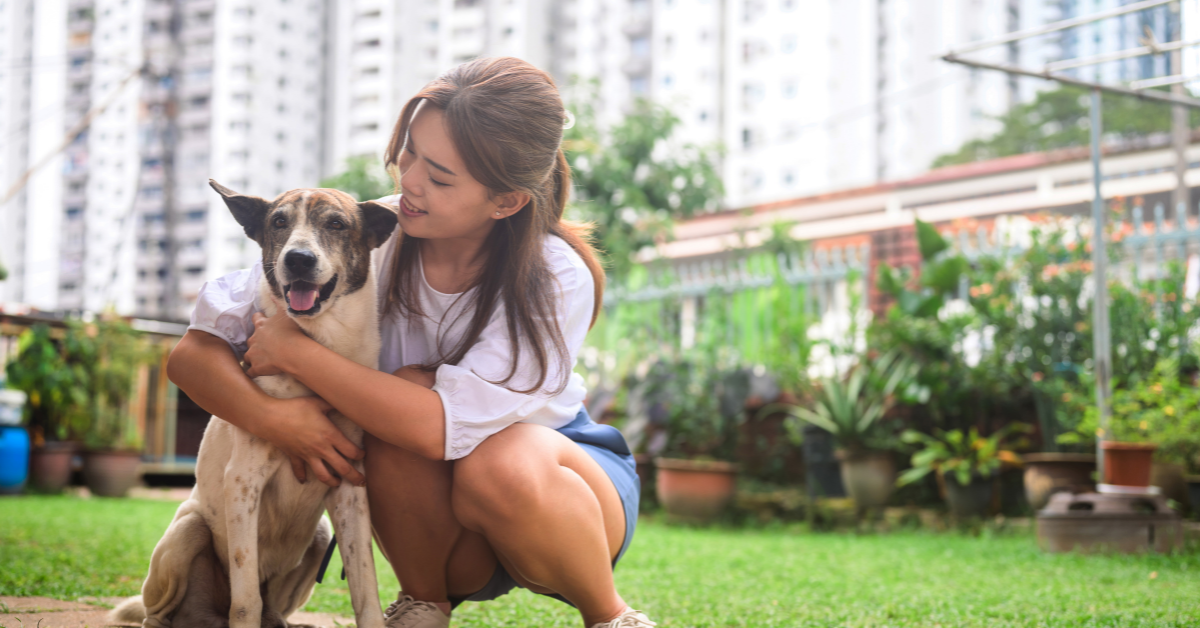
Your dog won’t be able to learn independence and self-reliance if you’re always showering them with attention.
It’s important to interact with your dog and show them they’re loved. However, you need to know where to draw the line, lest you become their pet in the process.
When you introduce your dog to your home, give them time to adjust on their own.
Let them find their way around and be able to stay calm even if you’re not there. Avoid giving them rewards for the sake of awards because that could cause further attachment.
Excessive attachment can make your dog only follow you around and ignore other family members or stimulus.
Possible Reason Number 5: Change In Routine

Familiarity is important for dogs. When you disrupt their routine and surroundings, they’re prone to become upset.
For instance, if you have to relocate them to sleep in a different room, or if you’re moving to a new place, it can be pretty scary for them.
The one thing they recognize as familiar is you. Therefore, it’s likely they’ll spend more time around you, and this could turn into them becoming a “Velcro dog,” or one that is constantly attached to you.
This can persist until they’ve gotten used to the new routine and location. However, without intervention, another change in routine could just cause more unease and misbehavior.
Possible Reason Number 6: Fear
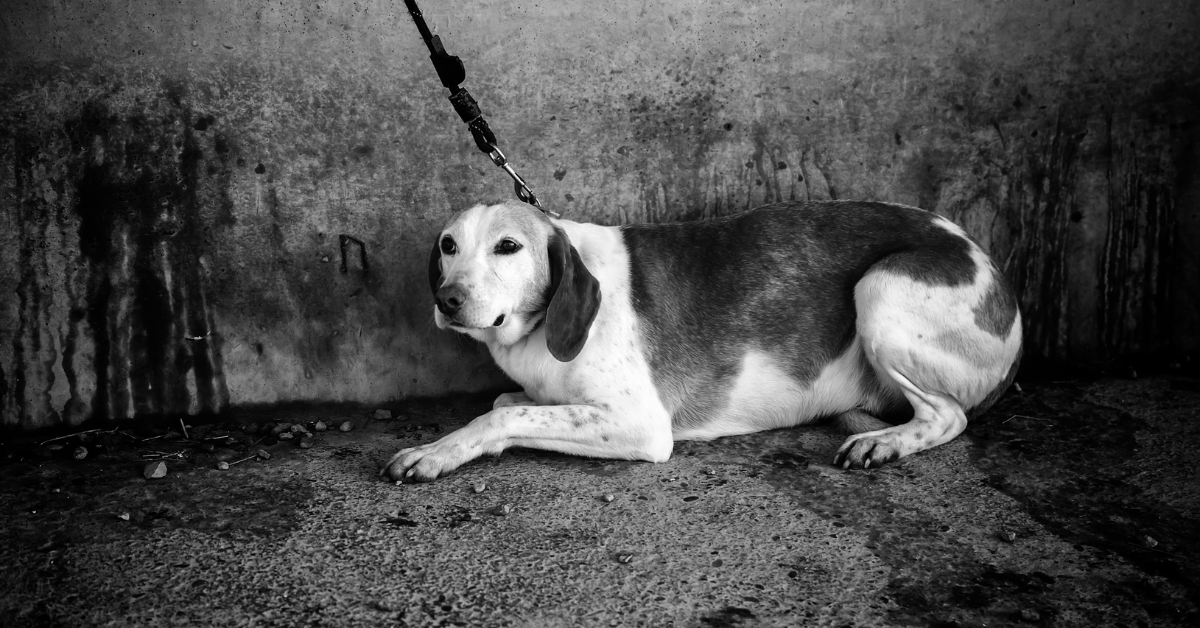
Your dogs can experience the feeling of fear in the same way as you do. Fear is not a negative emotion altogether that needs to be eliminated. It is one of the factors canines rely on to understand their environment and survive.
According to AKC, fear is a defense mechanism, and when the feeling is persistent, it can turn into a phobia. When your dog is fearful, it can exhibit behaviors like shaking, whining, hiding, barking, and pacing. And as it sees you as its provider and protector, following you or not leaving your side can be a natural reaction.
There are several fears and phobias your dog can develop. Some of the common ones are fear of sounds, strangers, injections, and certain situations.
For example, your dog may not leave your side during a thunderstorm or when fireworks light up the sky. The dog may develop a phobia of strangers if they have had a negative experience.
Possible Reason Number 7: Boredom

Another reason for your dog not to leave your side could be that it has nothing better to do. It is just plain boring and follows you around.
Your canine best friend is a social creature by nature. It needs a certain amount of physical and mental stimulation and attention. If the dog is not getting its exercise quota and if it does not have interesting toys to keep it engaged. Also, if left alone for longer periods, it can get bored.
It would help if you were careful of canine boredom because the dog will then find interesting activities to do on its own. Not leaving your side can be one of the least destructive behaviors the dog could indulge in.
You should address the situation, or the dog can develop habits that can be potentially harmful and dangerous for itself, other pets, and your home.
Possible Reason Number 8: Aging
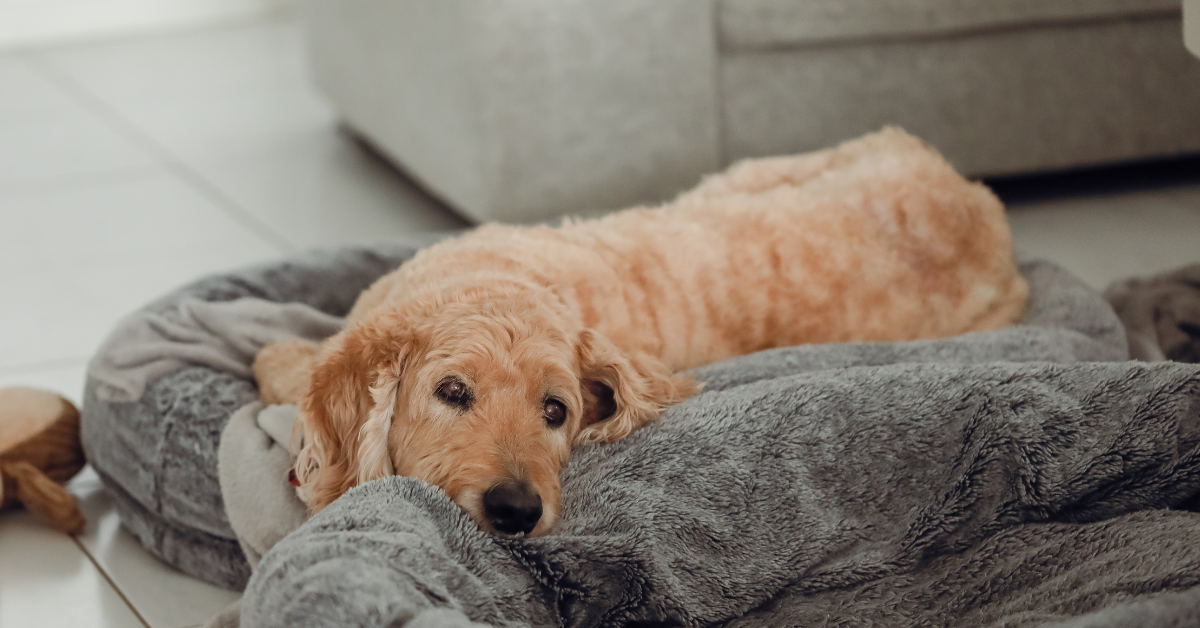
As your pet ages, its brain may not function as effectively as before. For example, dogs can develop canine cognitive dysfunction (CCD). The condition is also known as dog dementia, and its symptoms are similar to Alzheimers in humans.
As the condition progresses, your dog may show signs like disorientation, forgetting routines and house rules, irritability, wandering around, losing appetite, and a change in its sleep cycle.
The condition can be difficult and confusing for the dog. Staying by your side could be a voluntary behavior because the dog is scared. Or it could be involuntary, as dogs with dementia can sometimes space out.
Though there is no cure for the condition, the vet can prescribe medications and recommend lifestyle changes to help you better care for your furry friend.
Possible Reason Number 9: Hunger
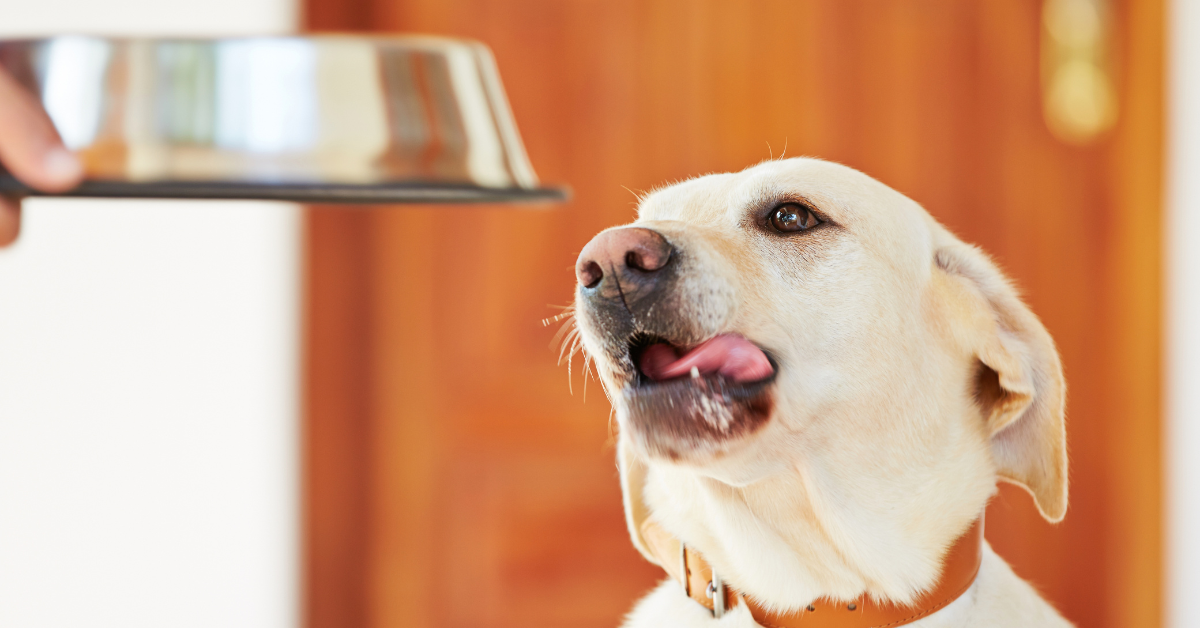
If your dog stays by your side asking for treats or wanting to be fed a piece of your meals, it could be genuinely hungry.
During the early stages, puppies need much more food than adults or seniors. Similarly, different dog breeds have different diet requirements. Small and large-sized dogs will have a significant difference in food quantities.
Monitor your pet’s behavior. For example, if it does not leave your side when you are eating or drinking anything, the cause could be hunger.
Possible Reason Number 10: Social Anxiety
Social anxiety can be considered one of the fears that dogs can develop. The triggers of this type of anxiety could be people and other pets.
For example, if dogs have not been well-socialized during their early years, they can get fearful around other people. As they spend most of their time in your company, they will cling to your side when in the company of strangers.
This goes for other pets and animals. Your dog will not enjoy spending time at a place like a dog park. If it has not been around other dogs or animals, taking it to a palace like a dog park can be too overwhelming for your dog.
Possible Reason Number 11: Companionship
Dogs enjoy the company of their human family. Some breeds need more company than others. Even the dog breeds that are popular for being independent need some human companionship.
If the dog is usually left alone during the day, it would be natural not to leave your side when you are home. Your dog may be missing you, and staying by your side could be its way of expressing its love and care for you.
This is why it is important to understand the needs of a dog breed before bringing one home. For example, if you have a busy lifestyle, then attention-needing dogs like Siberian Huskies, Labrador Retrievers, or Border Collies may not be the right fit for your home.
What To Do When My Dog Won’t Leave My Side?
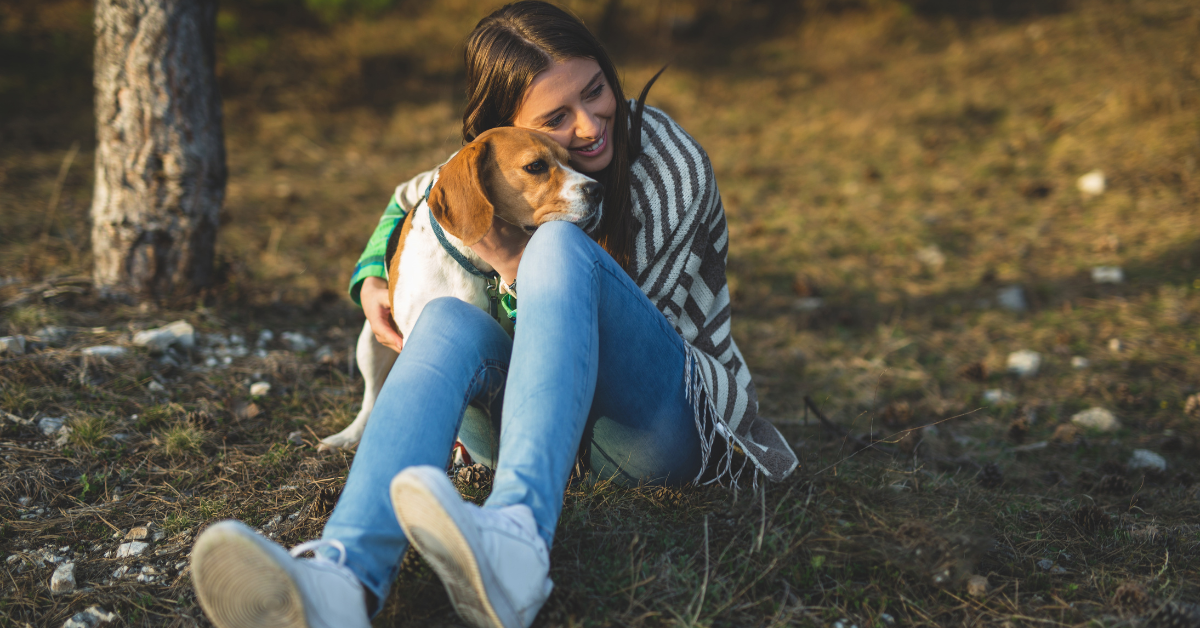
Now that you know some of the biggest causes of clinginess in dogs, let’s talk about what can be done to correct these behaviors.
Avoid Giving Constant Attention
You might see your dog as your child and want to dote on them whenever possible.
However, while you may think you’re showing them love, you’re actually conditioning them to become dependent on your attention. You need to set boundaries through positive reinforcement while also showing your love for them.
Spend time apart from your dog to help them develop their independence.
If they’re sleeping peacefully on the couch, let them rest and enjoy the time you have to yourself.
Need to take a nap yourself? Close the door so they’re not following you in. Enjoy the moments you have together, but don’t make it so either of you is dependent on the other.
Introduce Them To Other People
It’s great if your dog loves being around people, but it’s a problem if they only like being around one person: you. This could cause them to be nervous or hostile around other people. Imagine trying to hire a dog walker or sitter under these conditions.
Let your dog become more familiar with others.
Invite friends over, and have your dog get used to their scent. This can give you a break as well as help your dog become more accustomed to other people. During social events, your dog can become the life of the party.
Learn To Say “No”
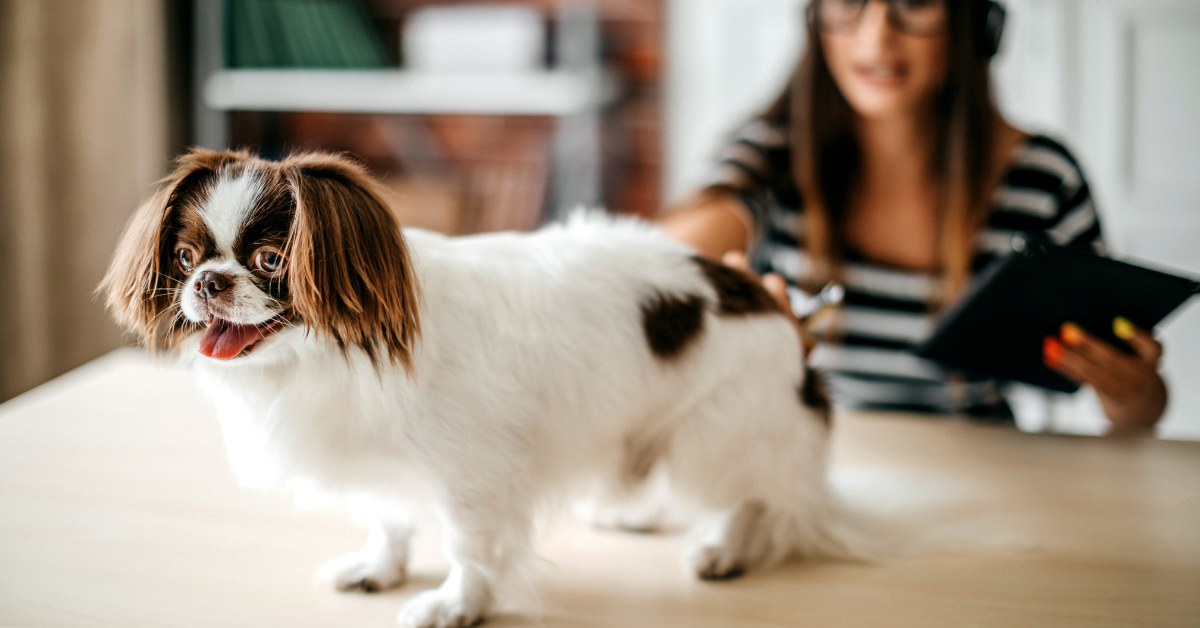
For creatures that can’t talk, dogs learn to communicate through other means and can be incredibly persuasive.
A slight whine and pleading look in their eyes can be all they need to turn you to putty. But if you’re tending to every desire of your dog, they’ll think you’ll do anything and everything for them. You need to show them that this isn’t the case.
Don’t feed them from the table.
Keep them off the couch if they’re not supposed to be on it.
If they want to play but you’re preoccupied, stay focused on what you’re doing. Unless your dog clearly needs food or to go outside, it’s okay to say “no.” This can also better establish your role as the master in the household.
It’s totally possible to love your dog without giving in to their every whim. Like with any relationship, boundaries have to be established in order for it to be healthy.
Talk To An Expert
It takes time for your dog to unlearn clingy behaviors.
Don’t expect a Velcro dog to become independent after a week of saying no and decreased attention. However, if you’ve tried on your own for a long time without success, it’s time to consult with an expert.
Schedule an appointment with a qualified professional, such as a pet psychologist or a dog behaviorist.
They should be able to discern specific causes of your dog’s attachment and create a careful treatment plan. This isn’t going to be an instant cure, either. However, it can help steer both of you in the right direction.
Redirect Their Focus
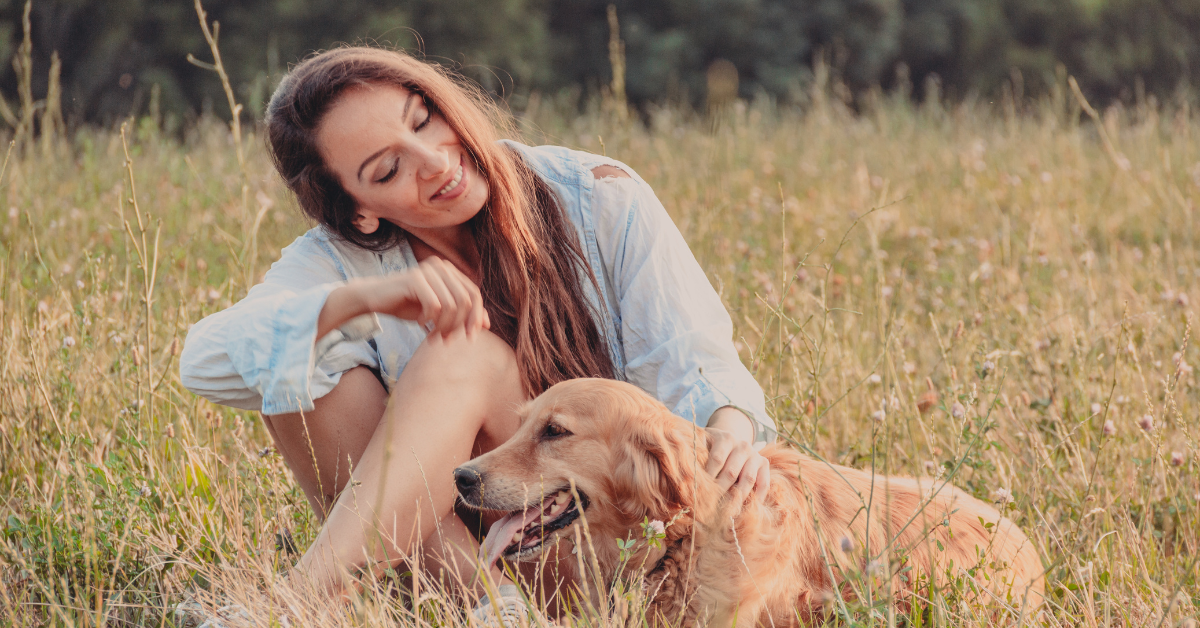
If your dog is well looked after, is fed and exercised regularly, and still sticks by you, it may develop a clingy behavior. In such cases, redirecting your dog’s attention may help.
For example, the next time the dog clings to you, do not give it your attention but instead give it a toy, an interactive puzzle to play with, or a treat like a bully stick to chew on.
Keep changing the activities you use to redirect your dog’s attention. For example, if you always give the dog a small treat when it clings to you, the dog will learn that clinging to you means treating time.
Understand Triggers
If fear is causing the dog to stay by your side, you need to figure out the triggers and work on them.
For example, let us assume your dog is scared of loud noises that one can hear during a thunderstorm or a fireworks show. You can help the dog by creating a safe space to stay in temporarily, playing music or white noise, covering it with a blanket, and trying soothing words.
If the fear stems from people and other animals, you need to start socializing your pet slowly. Invite a friend, and let your dog be in the same room. If your pet is comfortable, your friend could try petting the dog or playing with it. Gradually you can introduce your pet to more people.
Physical and Mental Stimulation
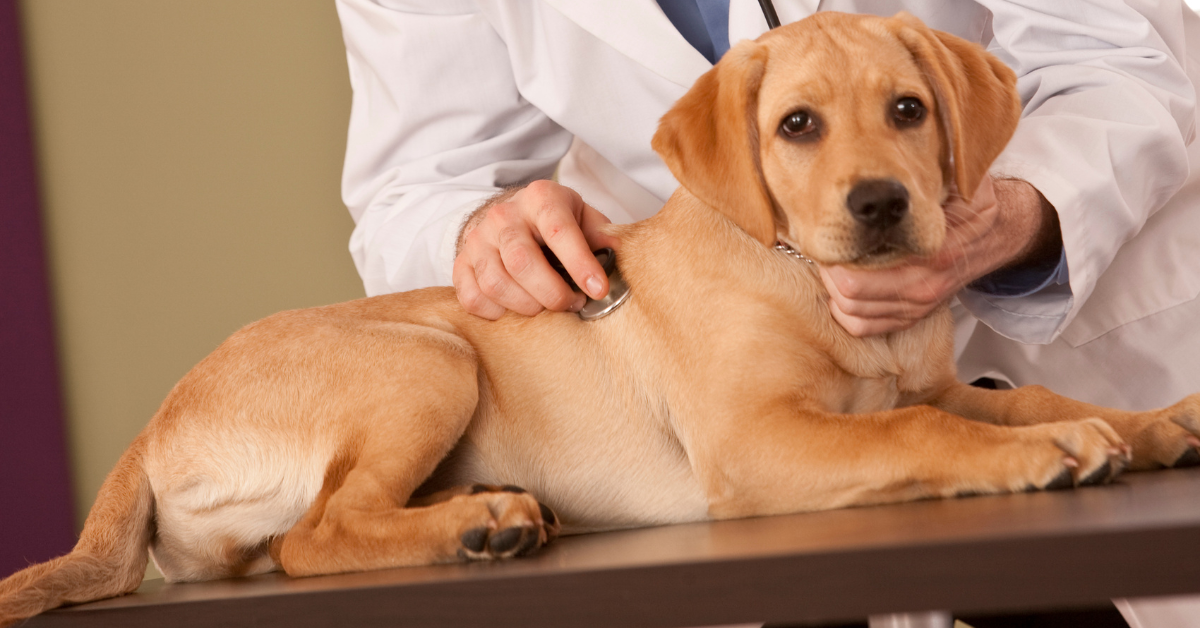
Exercise and playtime can help keep your pet physically and mentally healthy. They can also keep the dog entertained and keep them away from developing destructive behaviors.
The amount of exercise and mental stimulation depends on the dog’s breed. For example, a Labrador Retriever is an intelligent, friendly, and active dog.
The dog will need around an hour of high-quality exercise daily. It would help if you took the dog for walks, runs, hikes, and swims and indulged in agility or obedience exercises to keep things interesting.
According to AKC, if high-energy breeds like Retrievers do not get enough exercise, they can get hyperactive and develop destructive habits to release their pent-up energy. So, research or ask your vet how much exercise and quality playtime your pet needs.
Check on its Diet
If hunger is the reason your dog does not leave your side, check on its food. You might not be feeding the pet enough food. Or the food quality may be an issue.
It may not be supplying your pet with all the nutrients it needs.
For example, large-sized dogs may do well on a high-protein diet. However, if you are feeding the pet only kibble, it may be left hungry even after having full-sized meals.
Talk to the vet if you need help determining what and how much food to feed your pet.
Also Read: 10 Nutritionally Complete Homemade Dog Food Recipes [Vet-Approved]
Spend Quality Time With the Dog
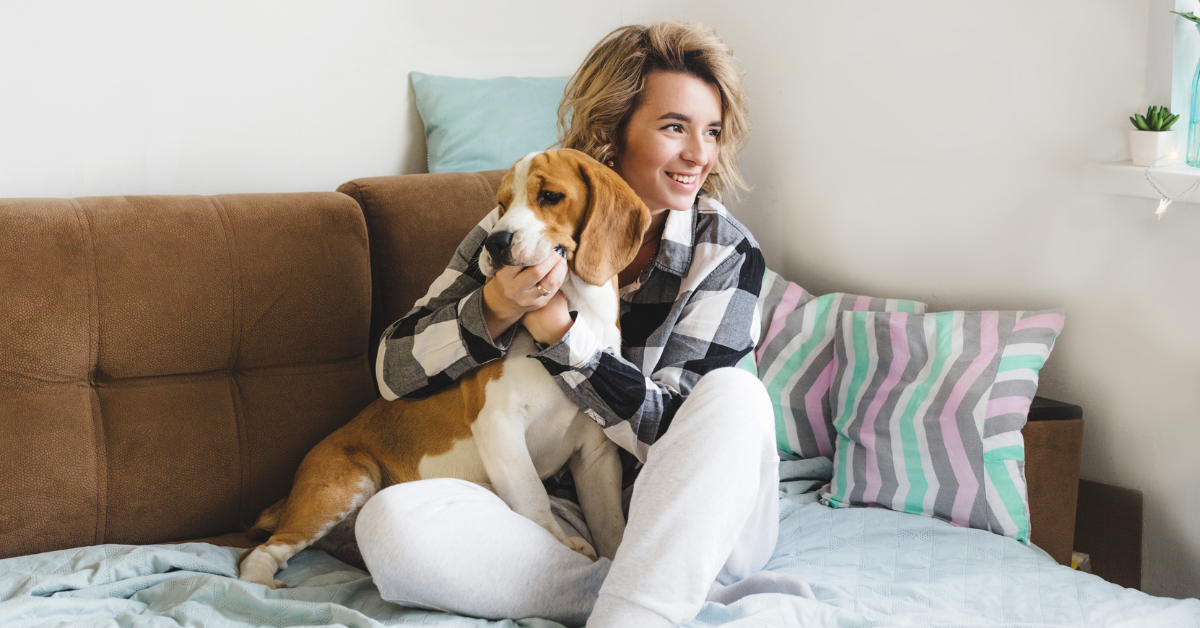
This may seem like a contradictory tip when you are trying to get your dog to leave your side. But as we mentioned above, your dog seeking companionship can be one of the reasons it stays by your side. And the solution for this cause is spending quality time with your dog.
Quality time could mean cuddling on the sofa, playing a game of fetch, taking an agility class, running around the yard or working out together, or simply talking to your dog.
If you do these activities a few times a week, the dog will be less likely to cling to you as its need for human connection is being fulfilled.
Summary
In the times that I have found that my dog won’t leave my side, I’ve also discovered that it usually boils down to one (or more) of five reasons.
These reasons can include:
- Separation anxiety
- The breed of the dog
- Their immediate health status
- Myself giving too much attention
- A big change to their usual routine.
It is important to firstly identify what the behavior is caused by, and then to directly address the issue head-on. Usually this involves some degree of socializing as well as setting healthy boundaries.
If you find yourself unsure of what to do, don’t hesitate to contact your vet or a dog psychologist for help with your clingy pup! Proper space and boundaries mean healthier and happier lives for everyone involved.
Elena Gherman is a highly skilled and knowledgeable animal care expert. At the start of her career, she gained practical expertise with multiple animals. In addition to that, she works as a DVM veterinary editor for Joy Pet Products, which focuses on offering reliable information on pet health and wellbeing. She meticulously reviews each piece of writing before it is published to make sure pet owners get the most precise and updated information possible.
